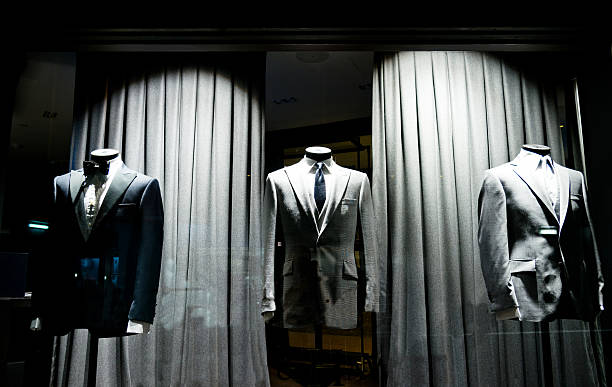The Pinnacle of Time: Exploring the Best Luxury Watches
Luxury watches have always represented more than just a way to keep time. They are symbols of status, craftsmanship, and personal style. The world of luxury watches is vast and varied, encompassing brands with centuries-old heritage, avant-garde innovators, and bespoke artisans. This article delves into the exquisite universe of luxury timepieces, exploring what makes them unique, the craftsmanship behind them, and why they continue to be coveted by collectors and enthusiasts alike.
A History of Excellence
The history of luxury watches is deeply intertwined with the evolution of horology itself. The roots of watchmaking trace back to the 16th century, with the earliest portable timepieces emerging in Europe. By the 18th century, Swiss watchmakers had established themselves as the masters of the craft, a reputation they still hold today. The establishment of brands like Vacheron Constantin in 1755 and Breguet in 1775 marked the beginning of an era where precision and artistry in timekeeping became paramount.
The 19th and 20th centuries saw significant advancements in watch technology, including the introduction of chronographs, perpetual calendars, and tourbillons. These innovations were not just about improving accuracy but also about pushing the boundaries of what was possible in miniature mechanics. Brands like Patek Philippe, Audemars Piguet, and Rolex became synonymous with innovation and luxury, each contributing unique advancements to the field.
The Art of Watchmaking
At the heart of every luxury watch is the craftsmanship that goes into its creation. Unlike mass-produced timepieces, luxury watches are often handmade, with each component meticulously crafted and assembled. This process can take hundreds of hours, with skilled artisans paying attention to the smallest details.
The movement, or the engine of the watch, is a marvel of engineering. It consists of numerous tiny parts working in harmony to ensure accurate timekeeping. High-end movements, such as those found in watches by A. Lange & Söhne or Jaeger-LeCoultre, are often hand-finished and decorated, with techniques like Geneva stripes, perlage, and hand-engraving enhancing their beauty.
The case, dial, and bracelet of a luxury watch are equally important. Materials such as gold, platinum, and high-tech ceramics are commonly used, often adorned with precious stones. The design of these elements is crucial, combining aesthetics with functionality. Brands like Cartier and Bulgari are renowned for their elegant designs, while others like Hublot and Richard Mille push the envelope with bold, modern aesthetics.
Iconic Luxury Watches
Several luxury watches have achieved iconic status, becoming benchmarks in the industry. The Rolex Submariner, introduced in 1953, is one such example. Known for its durability and timeless design, it has become a favorite among divers and watch enthusiasts. The Patek Philippe Calatrava, with its minimalist elegance, represents the epitome of classic watch design.
The Audemars Piguet Royal Oak, designed by Gerald Genta and launched in 1972, revolutionized the industry with its bold, octagonal bezel and integrated bracelet. It challenged the conventions of luxury watch design and remains one of the most sought-after models today. Similarly, the Omega Speedmaster, famously worn during the Apollo moon missions, combines technical prowess with a storied history.
The Appeal of Luxury Watches
What drives the enduring appeal of luxury watches? For many, it is the combination of heritage, craftsmanship, and exclusivity. Owning a luxury watch is often seen as a rite of passage, a tangible symbol of success and taste. The intricate mechanics and high-quality materials used in these watches also mean they can last a lifetime, often becoming family heirlooms passed down through generations.
Furthermore, luxury watches often appreciate in value over time. Limited edition models and pieces with unique complications or provenance can fetch significant sums at auction. Brands like Patek Philippe and Rolex are known for their strong resale values, making them not just beautiful objects but also smart investments.
Innovation in Luxury Watches
While tradition plays a significant role in the world of luxury watches, innovation is equally important. Brands continually push the boundaries of what is possible, incorporating new materials and technologies. Silicon components, for instance, are being used to improve the precision and durability of movements. Advanced ceramics and carbon composites are also becoming more common, offering greater resistance to scratches and impacts.
Some brands are exploring the integration of smart technology with traditional watchmaking. The TAG Heuer Connected series, for example, combines the craftsmanship of a Swiss watch with the functionality of a smartwatch. This blending of old and new appeals to a younger generation of watch enthusiasts who value both heritage and modernity.
Collecting Luxury Watches
The world of luxury watch collecting is as diverse as the watches themselves. Collectors may focus on a particular brand, era, or type of complication. Vintage watches are especially prized, often because of their rarity and the stories they carry. A vintage Rolex Daytona or a Patek Philippe Nautilus from the 1970s can be worth significantly more than their original purchase price.
Collecting luxury watches also involves a deep appreciation for the art of horology. Understanding the history and mechanics behind each piece enhances the enjoyment of owning it. Many collectors build relationships with authorized dealers and auction houses, seeking out rare and limited-edition models.
The Future of Luxury Watches
As the luxury watch industry moves forward, it faces both challenges and opportunities. The rise of digital technology and changing consumer preferences require brands to adapt while maintaining their heritage. Sustainability is also becoming a significant consideration, with consumers increasingly valuing ethical production practices and environmentally friendly materials.
Despite these challenges, the allure of luxury watches remains strong. The craftsmanship, history, and emotional connection they offer are timeless. As new generations discover the beauty of mechanical timepieces, the industry continues to thrive, blending tradition with innovation.
Conclusion
Luxury watches are more than just instruments for telling time. They are works of art, feats of engineering, and symbols of personal achievement. From the meticulous craftsmanship that goes into their creation to the rich histories of the brands that produce them, luxury watches represent the pinnacle of horological excellence. Whether as a collector’s item, an investment, or a personal statement, these timepieces continue to captivate and inspire, embodying the timeless appeal of precision and beauty.


.jpg)
.jpg)
